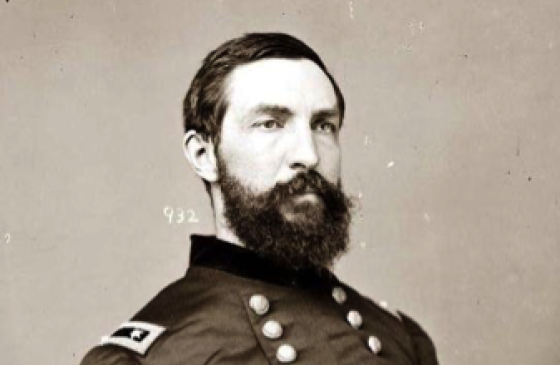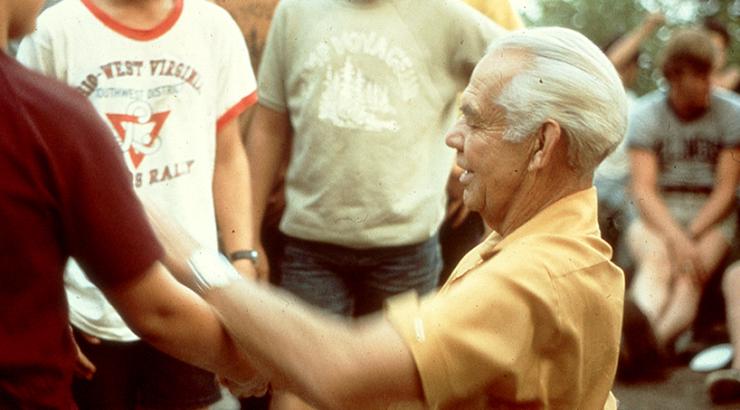It’s November, 2017, a day before Thanksgiving, and we are squarely in the middle of the fight to save the Boundary Waters Canoe Area Wilderness from the threat of sulfide-ore copper mining next to and upstream from the Wilderness. This is a good time to recall that the Superior National Forest, and the Boundary Waters within it, exist today only due to an unbroken chain of preservation efforts, beginning with Minnesota’s first Forestry Commissioner Civil War veteran, General Christopher C. Andrews.
For some of us, the current fight to prevent sulfide-ore copper mining in the watershed of the Boundary Waters is all we know of the 115-year-long episodic contest between those who would protect the Boundary Waters for all time, and others willing to break, consume and risk its pollution to extract an immediate, limited and narrowly-shared cash benefit. We are on the right and selfless side of this contest, and thank goodness for the seasoned advocates alongside us who also fought and helped win earlier battles. Specifically, the years-long efforts that led to passage of the 1978 BWCA Wilderness Act, and before that, the 1964 Wilderness Act itself. We owe them our thanks.
First on the list of those to whom we owe thanks is General C. C. Andrews, who took the first decisive steps to protect what is now the Superior National Forest and the Boundary Waters. A Civil War veteran who enlisted at the start of the war as a private in the Third Minnesota Infantry, C. C. Andrews rose quickly through the ranks and was honorably discharged in 1866 a Brevet Major-General. Born in New Hampshire, Andrews studied law at Harvard, passed the bar, moved to Kansas Territory and then to Minnesota, where he opened a law practice, operated a newspaper and won a seat in the Minnesota Senate. Upon his discharge from the Army, he briefly returned to his law practice in St. Cloud, served two stints as a diplomat (U.S. Minister to Sweden and Norway from 1869-1877; Consul General in Rio de Janeiro from 1882-1885) and upon returning to Minnesota, was appointed Minnesota’s first Forestry Commissioner.
As Forestry Commissioner from 1895 to 1911, General C. C. Andrews advocated scientific forest management and responsible logging at a time when unsustainable and chaotic private commercial logging was liquidating vast acreages of towering virgin white and red pine at breathtaking speed. After clearcutting their lands, the companies abandoned them without paying land taxes, moving on always to acquire, log, and abandon new tracts, a practice termed “cut and run.” A favorite tool of timber barons ravenous for fresh timberland was the fraudulent conveyance of homesteaded lands, a practice that by the late 1890s was diverting hundreds of thousands of acres every year through the hands of the timber companies.
Alarmed by what he saw, General C. C. Andrews petitioned the U.S. General Land Office (GLO) to withdraw some of the remaining areas of far Northeastern Minnesota from homesteading. In 1902 the GLO acted on the petition and set aside 500,000 acres of United States land in the Quetico-Superior area as off-limits to homesteading. Later, after he returned from a canoe trip in the Lac La Croix area and petitioned for the withdrawal of additional federal lands from homesteading, the GLO granted two more land withdrawals (in 1905 and 1908), which together protected 659,700 additional acres of U.S. public domain forest lands, lakes and islands – all in an area Andrews considered to be one of the most important and beautiful in Minnesota.[1]
The 1,159,700 acres assembled by the 1902, 1905, and 1908 federal land withdrawals provided the foundation for President Theodore Roosevelt’s establishment of the Superior National Forest in February 1909 – which he did largely at the urging of General C. C. Andrews and others. That act influenced Ontario’s provincial government, which was dealing with similarly unsustainable practices, to follow suit in April 1909 by establishing a forest reserve just to the north of the SNF. Four years later that Ontario forest reserve became the Quetico Provincial Park.[2]
After his time as Forestry Commissioner, General C. C. Andrews served on Minnesota’s Civil War monuments commission, authoring the commission’s report recommending state monuments in national military cemeteries in Arkansas, Tennessee and Georgia. Brevet Major-General Christopher C. Andrews is buried under an unassuming gravestone at Oakland Cemetery in St. Paul, roughly a mile north of the State Capitol Building.
[1] Searle, R. Newell. 1977. Saving Quetico-Superior: A Land Set Apart. Minnesota Historical Society Press. 289 pp.
[2] Heinselman, Miron (Bud). 1996. The Boundary Waters Wilderness Ecosystem. University of Minnesota Press. 334 pp.



